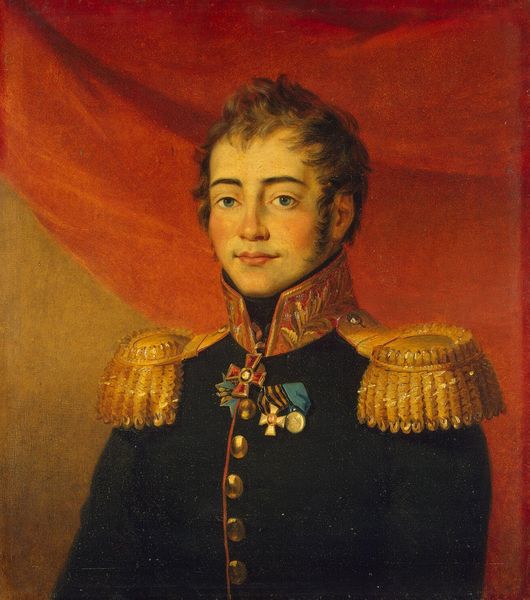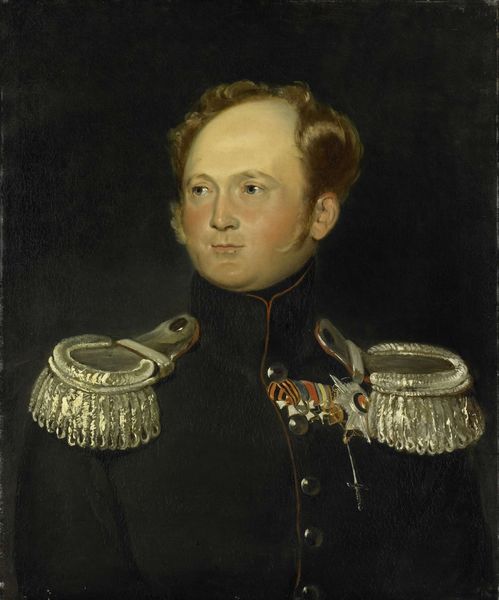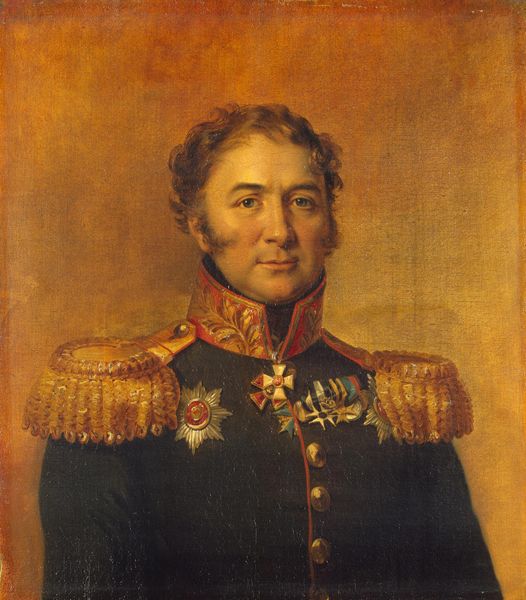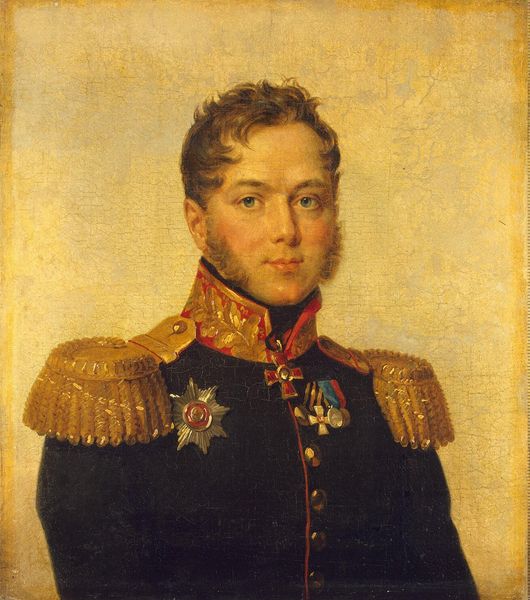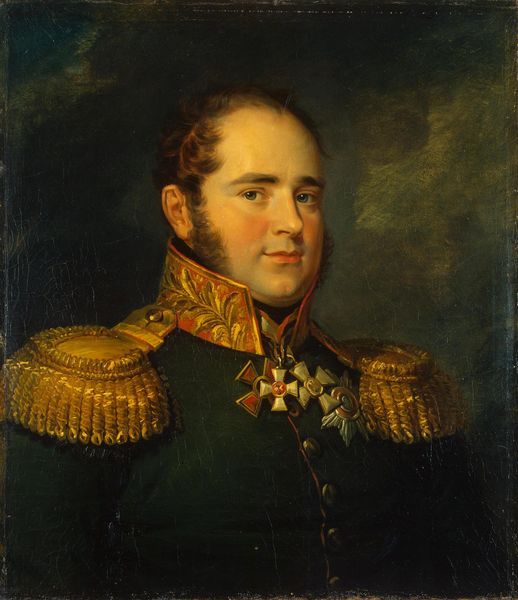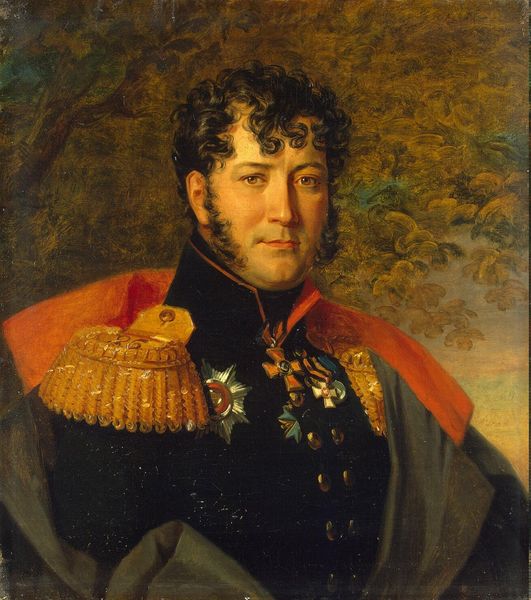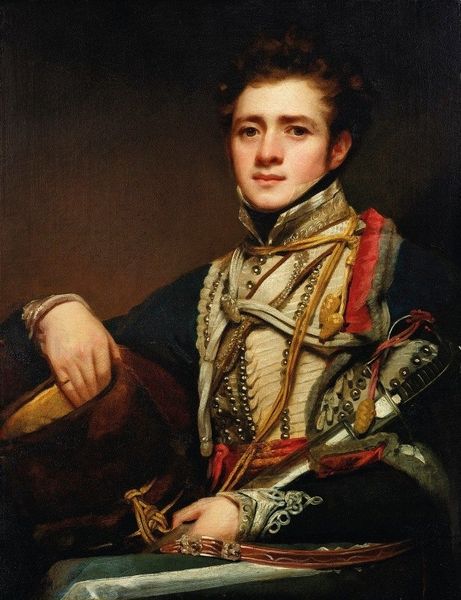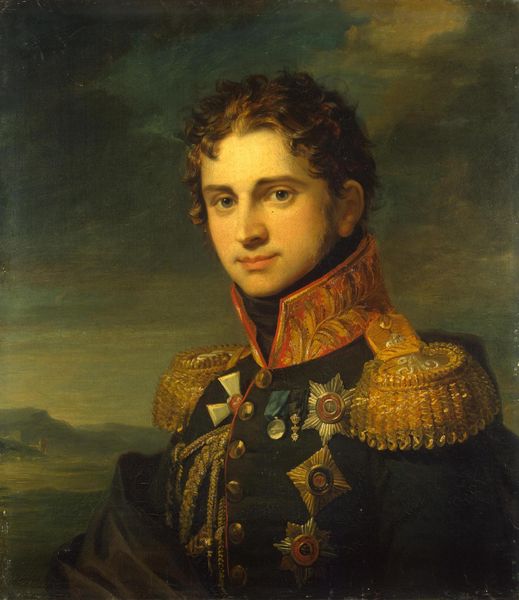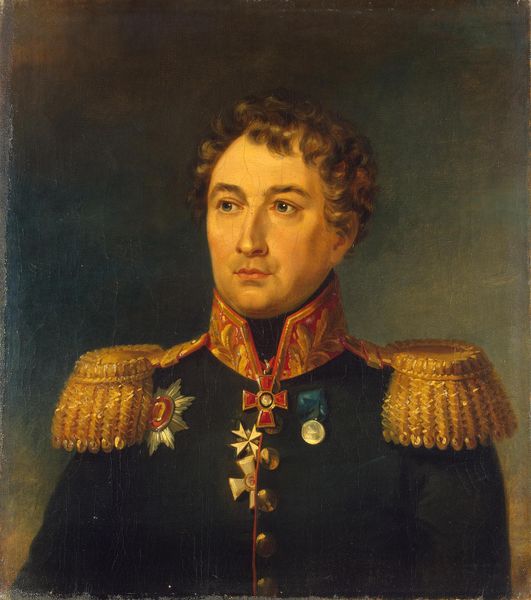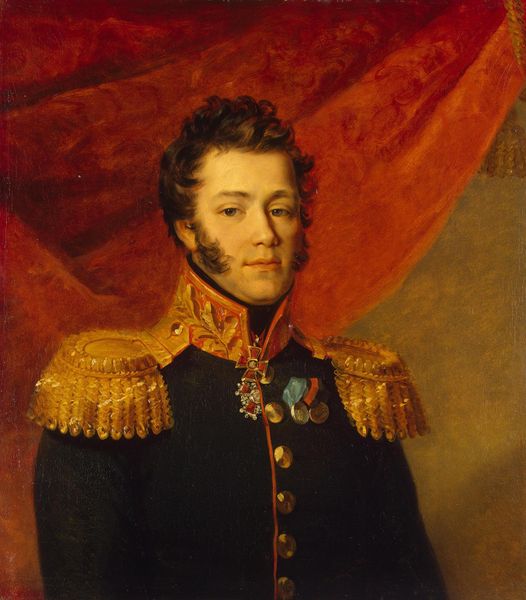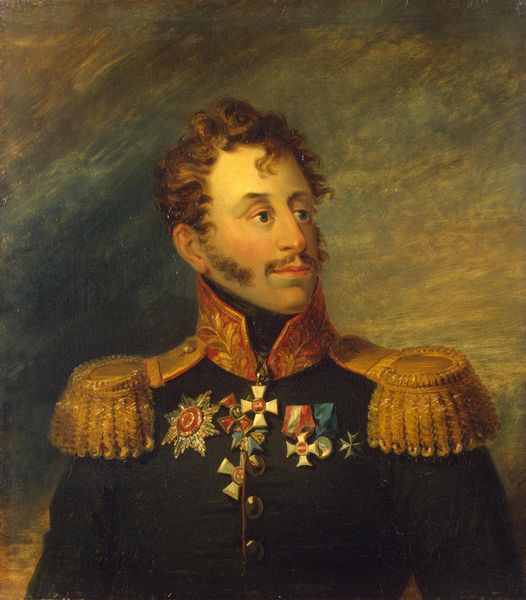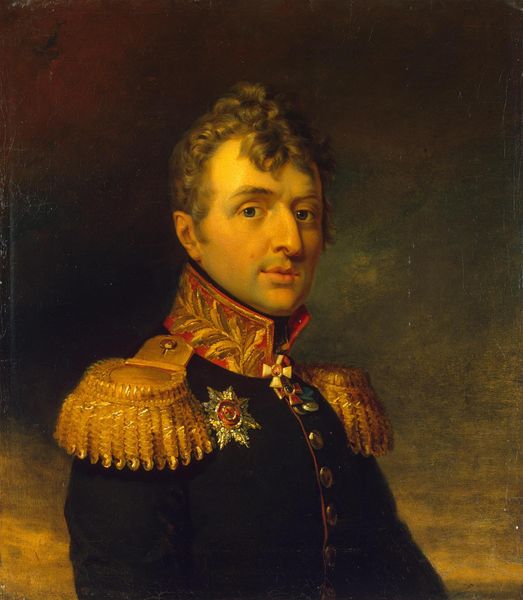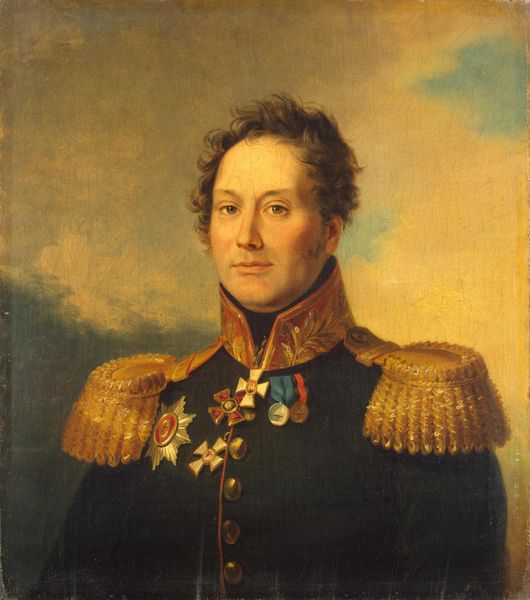
painting
#
portrait
#
painting
#
romanticism
#
history-painting
#
academic-art
#
portrait art
Dimensions: height 7.4 cm, width 4.5 cm, height 84 cm, width 4.8 cm, depth 0.7 cm
Copyright: Rijks Museum: Open Domain
Curator: It's quite a sweet face, isn't it? Sort of earnest and melancholic all at once. Editor: It is surprisingly small; I mean the support itself, looks to be painted in miniature on a thin organic layer, maybe ivory? Curator: Possibly. We're looking at Domenico Bossi's portrait of Alexander I, Emperor of Russia. It was painted sometime between 1805 and 1815. Think of it; Napoleon was still out there making everyone nervous! But it's this dreamy face that gets me, you almost don’t expect to see him leading troops across Europe. Editor: The cost of the pigment, particularly the blues and reds, would have been considerable. A powerful signifier of status—an overt display of wealth meant to signal imperial strength and, if we are considering painting on ivory, considerable labor to prepare it. I can only wonder who assisted the painter to execute the image and how many layers are there, the transparency is unbelievable. Curator: Right? It feels as though you could just whisper a secret into his ear and he would understand. He had such hope at the start, I mean Russia was supposed to be liberalized, the Napoleonic code even introduced, it would have all changed after the wars... then life catches up. A ruler with his ideals broken by, what, pragmatism, perhaps? That air of disappointment in himself – it's a painterly interpretation of a man, but also his epoch! Editor: The way the blue ribbon almost shimmers. It almost vibrates in front of all those gold embellishments, I agree about melancholy. It is intriguing how the very fabric of representation here — pigment, the artist’s hand, wealth display — works as much on the viewer as Alexander’s pensive face. It is so controlled, but delicate, not exactly what you would expect given it is a royal portrait. Curator: Exactly, which tells me all about how Bossi saw him – which of course tells us more about Bossi, about Russia, about that fascinating tightrope walk between romantic ideals and harsh political realities. Isn't that the magic trick of portraiture, after all? To tell a partial, persuasive, and perhaps embellished truth. Editor: Indeed, there are a few interpretations if you consider painting production back then. The work as it stands now really illuminates those tensions through materiality and how art, at its best, captures such ephemeral complexities.
Comments
No comments
Be the first to comment and join the conversation on the ultimate creative platform.
